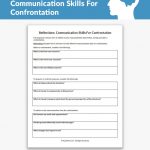Cognitive Distortions: Filtering Worksheet
Worksheet updated on February 11th, 2022

Our thought patterns make a difference in how we interpret challenging situations. When we practice healthy thinking patterns we can control how we react to upsetting issues. When we have errors in thinking, or cognitive distortions, we can misunderstand a challenging situation and behave in a way that may not fit our character.
Cognitive distortions are powerful errors in a person’s thought patterns that significantly affect a client’s ability to perceive and understand an upsetting situation. One common cognitive distortion that a person may experience is called filtering.
Filtering is a pattern of only focusing on the negative points of a situation, and ignoring the points of strength or the details that can make a challenging situation less hurtful than they may feel. It is also referred to as focusing on the negative, which can be detrimental to a person’s self-image and ability to think reasonably.
A client in therapy needs to understand how the habit of filtering is affecting their ability to cope with upsetting situations.
About This Worksheet
This is the Cognitive Distortions: Filtering worksheet. This worksheet provides an example of what filtering is and how it can affect a person’s perspective. On this worksheet you will find:
- A brief introduction to filtering
- An example of what filtering is and how it affects a person
- Space to reflect on how filtering is affecting the client’s thought patterns
This worksheet is great for individual and group counseling sessions. It can also be instrumental in family and couples counseling. Adolescents and adults can understand and benefit from the content of this worksheet.
Instructions
Review the information about filtering with the client. Explain the definition of filtering and how it is affecting their quality of life.
Review the example with the client to ensure that they understand the content and how it applies to them.
Instruct the client to complete the three reflection questions. The client should choose a situation in which they were filtering, and use this situation to complete the three reflection questions.







